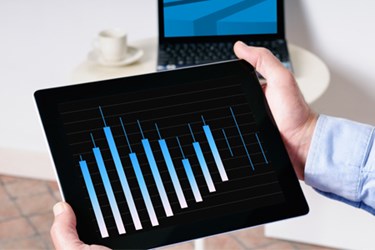Mobile Analytics Report Finds Android, Fitness Apps Winning In Healthcare

By Christine Kern, contributing writer

Healthcare technology mobile use is increasing, but users remain cost-conscious.
Citrix has released its mobile analytics report for the first half of 2015, including snapshots of mobile healthcare trends. The study found fitness apps lead the way among mobile healthcare app users, women's health support use is down, and the Android operating system shows surprising strength.
The annual report highlights new global trends in the worlds of consumer and enterprise mobility, drawing data from a cross-section of mobile network operators and enterprises, and analyzing how and when consumers are using the most data on their mobile devices. In a press release, Chris Fleck, VP of Mobility Solutions and Alliances at Citrix, said, “The line between personal and business mobility continues to blur as people routinely use the same smartphones and tablets across every part of their lives. It’s no longer possible to maintain artificial boundaries of personal and business mobility. With insights into the latest mobile user behavior, preferences and needs, the Mobile Analytics Report provides a window into the potential pitfalls and opportunities for mobile operators and enterprise IT to deliver mobile experiences that people expect at home, work, and play.”
Among the study findings: users are migrating to larger screened-devices, and must have larger data plans to accommodate them. The iPhone 6 Plus users generate twice as much data volume as iPhone 6 users, which Citrix attributes to the increased amount of video consumption on the larger screen of the iPhone 6 Plus. For the first time, the report addresses both mobile subscriber and business mobility trends, drawing on data from a global cross-section of mobile network operators and enterprises.
The data showed that, among healthcare consumer platforms, the use of fitness apps doubled from 2013 to 2015, jumping from 39 percent to 78 percent of users. Top fitness apps included MyFitnessPal, Runtastic, RunKeeper, Lose It!, JEFIT Workout, MapMyRun, Workout Trainer, and Nike.
Meanwhile, women’s healthcare support apps fell sharply out of use, from 47 percent of users reporting they used such apps in 2013 to 14 percent in 2015.
The study also found the healthcare industry trended towards Android over Apple iOS systems, with 39 percent of users reporting they used Android devices and 55 percent reporting they used iOS. There was greater Android use in healthcare than in other sectors. One reason for this distinction, according to the report's authors, may be a combination of the pressure these organizations face to cut costs, and the increasing equivalence of the apps available on lower-cost Android devices.
The report also discovered the average time per use among mobile users is 4.6 minutes, increasing through the day, from an average low of 2.7 minutes at 4 a.m. to an average high of 6.7 minutes at 9 p.m.
